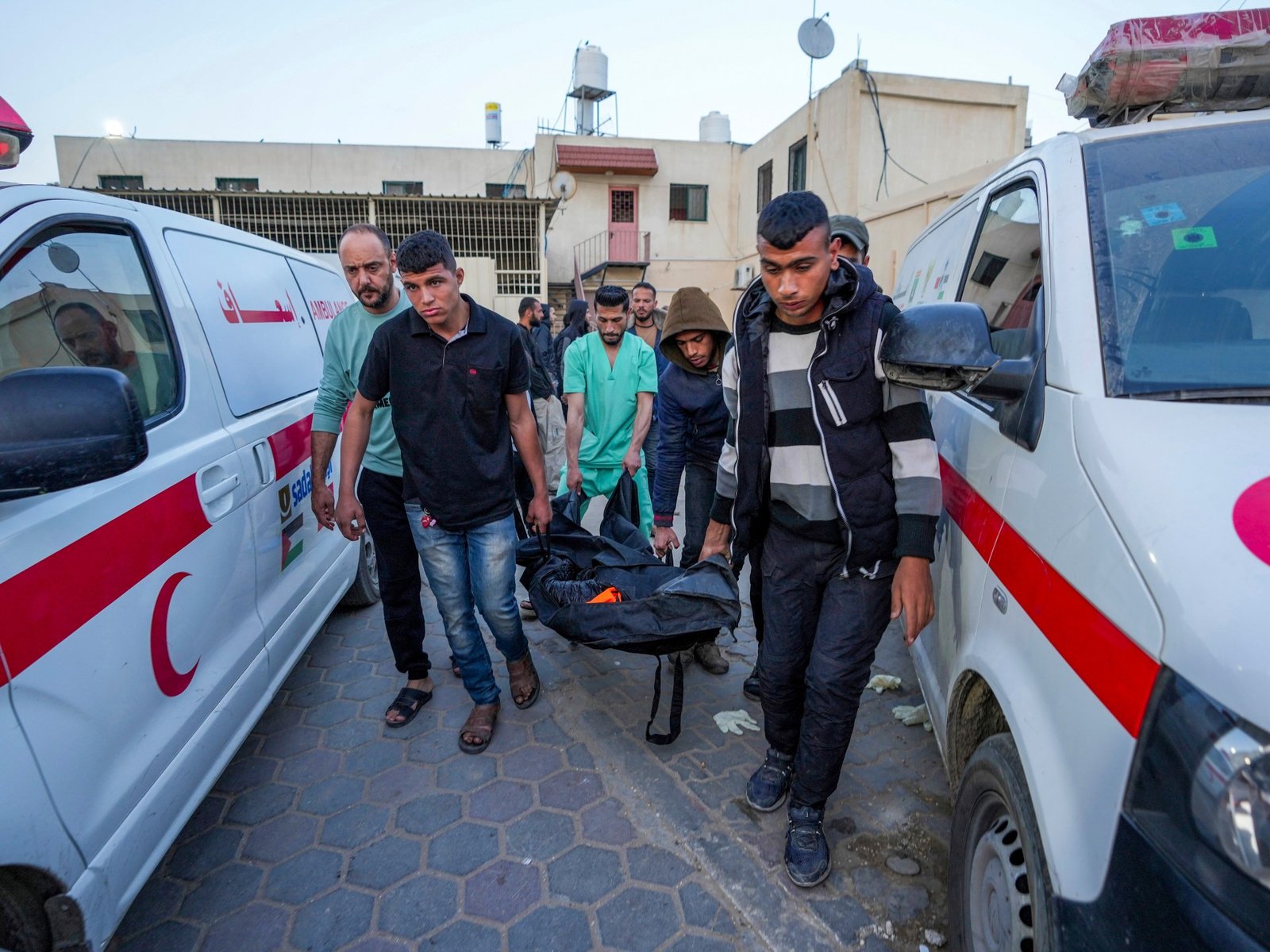
EXPLAINER
The pitch was clear — the results mixed for Modi’s BJP. And India will see a dip in women MPs in its incoming parliament.
Ahead of International Women’s Day, Indian Prime Minister Narendra Modi held an unusual campaign event leading up to the country’s giant national election: He addressed a rally with only women in the audience, in the eastern state of West Bengal.
Women voters, Modi said, were his shield against criticism of his government’s decade-long rule. His comments were in keeping with Modi’s – and his government’s – targeted outreach to women, who constitute 49 percent of the country’s population.
From the distribution of cooking gas connections to claims of improved safety for women, the Bharatiya Janata Party (BJP) has, under Modi, pithed itself as a defender of the interests of Indian women, even though some of its policies have drawn criticism as being rooted more in bombast than fact.
And multiple surveys ahead of India’s election suggested that the BJP’s support among women was higher than among men, in contrast with the opposition.
But a week after the results of India’s elections became clear, with the BJP falling short of a majority, and relying on coalition allies to form the government that was sworn in on Sunday, a complex picture is emerging of how women actually voted in 2024. The results also show a break from a trend of rising numbers of elected women parliamentarians in recent years.
Al Jazeera dissects how the BJP wooed voters, how its women candidates performed, how women voted and the state of representation in the incoming Indian parliament.
What are some of the BJP’s biggest pitches to women?
- LPG cylinder access: In May 2016, Modi launched the Ujjwala scheme — the word means “bright” in Sanskrit — aimed at supplying cooking gas cylinders to every household. In multiple advertising campaigns since then, the BJP has shown Modi as a leader who rescued millions of women from having to rely on coal and wood for cooking. Government data shows that gas cylinder coverage rose from 55 percent in 2016 to 97 percent by 2020, though other data suggests that many cylinder recipients have been able to afford refills – raising questions about the scheme.

- Maternity leave: In 2017, the BJP government pushed through legal amendments that gave women workers in the formal sector six months of paid maternity leave – double what they had previously. Critics point out that semiformal and informal sectors dominate when it comes to India’s labour force – offering far fewer protections to workers, especially women. Overall, India’s female labour participation ratio has fallen in recent years – meaning that fewer women are even seeking employment.
- Women’s safety: In a country where nearly 90 rapes are reported every day, women’s safety is a key concern. Uttar Pradesh, India’s most populous state, has long bee hobbled with a reputation for particularly unsafe. Under the current BJP government in the state, under Chief Minister Yogi Adityanath, Uttar Pradesh now records the country’s highest conviction rate for cases involving crimes against women. Critics, though, point out that the total number of crimes against women has also been rising, year on year, in the state.

- Women’s Reservation Bill: Passed by Parliament in September 2023 after six failed attempts since its introduction in 1996, this law aims to ensure that women occupy at least one-third, or 33 percent of seats in the Lok Sabha and in state legislative assemblies. However, the bill will not be implemented before 2029, and will only be implemented after a census exercise followed by delimitation. That delay, and the procedural hurdles that need to be crossed, “makes its implementation uncertain,” Jagdeep Chhokar, a co-founder of the Association for Democratic Reforms, which works on electoral and political reforms told Al Jazeera.
- Triple talaq ban: The Modi government claims to have liberated Indian Muslim women by banning the practice of triple talaq, which allowed men the option of a near-instant divorce by chanting the word “talaq” thrice. Critics point out that the ban plays into anti-Muslim stereotypes in its portrayal of Muslim men as particularly regressive, even as the Modi government has taken steps that appear to go against the interests of Muslim women. In 2022, the Modi government authorised the early release of the convicted rapists of Bilkis Bano, a Muslim woman, during the 2002 anti-Muslim riots in the state of Gujarat, where Modi was chief minister at the time. The Supreme Court overruled that decision in January 2024.

Did women voters flock to the BJP?
The data suggests that the outreach didn’t particularly resonate with women voters, according to a post-poll survey by Lokniti, a research programme at the New Delhi-based Centre for the Study of Developing Societies (CSDS).
The party won, by far, the most seats and votes in Parliament — 240 seats and 37 percent votes.
But within those numbers, a higher fraction of male voters — 37 percent — chose the BJP than female voters (36 percent). Those numbers are similar to the support the party received in 2019.
That contrasts with numbers for the principal opposition party, the Congress. This year, 22 percent of women voted for the Congress, a 2 percent increase from 2019. By comparison, 21 percent of men voted for the Congress this year.
Chhokar said most women “see through” politically motivated programmes like the ones the BJP has touted.
“They see these programmes are not real and are just for them to vote. They’ve seen the implementation over the years,” he said.
How many women from the BJP won the 2024 election?
The BJP has not outperformed its rivals when it comes to sending women MPs to parliament either.
To be sure, its overall seat tally means the BJP has more women MPs — as also more male MPs — than any other party. Out of the 74 women elected into the Lok Sabha this year, 30 are from the BJP.
But those 30 represent 12.5 percent of the BJP’s total tally of 240 seats.
By contrast, women won 13.1 percent of Congress seats and 38 percent of the All India Trinamool Congress’ (AITC) seats. The Trinamool Congress is part of the opposition INDIA alliance with the Congress.
In 2019, 41 of the BJP’s 303 seats were held by women, making women MPs 13.5 percent of BJP’s MPs in the last election. For the Congress, this percentage was 11.5 percent and for Trinamool it was 40.9 percent in 2019.

How have women performed in India’s elections over the years?
Yet the low numbers of women MPs is not a party-specific phenomenon.
“All political parties want women as voters only and not as elected representatives,” said Chhokar. “Men in political parties do not wish to share power with women”.
In 1951, 22 women were elected as MPs, forming about 5 percent of the Lok Sabha. This has steadily risen, especially in the past three decades, reaching 14.3 percent in 2019.
However, 2024 saw a slight dip in the number of women MPs in parliament, with 74 women MPs, compared with the 2019 election in which 78 women were elected.
EMEA Tribune is not involved in this news article, it is taken from our partners and or from the News Agencies. Copyright and Credit go to the News Agencies, email news@emeatribune.com Follow our WhatsApp verified Channel









